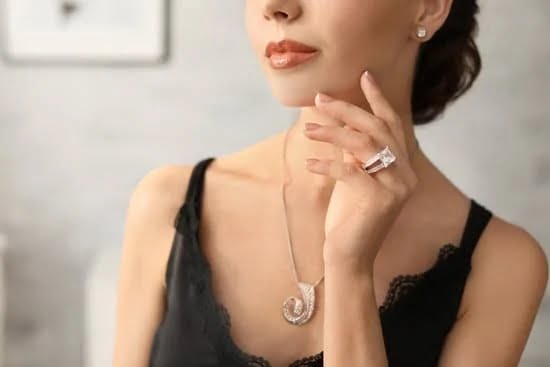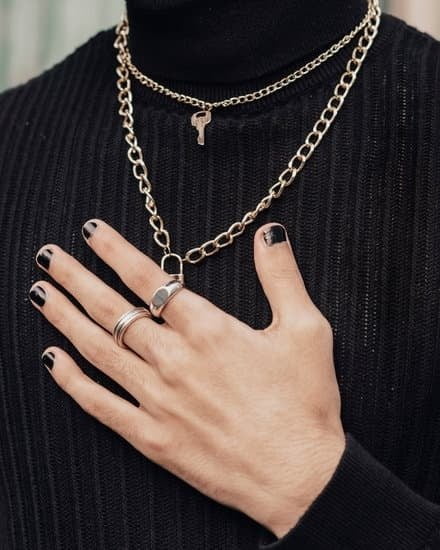Introduction
Jewelry making is an enjoyable and creative activity that encourages artistic expression, as well as an opportunity to design and create personalized pieces of art. With so many different materials, tools available and styles trending, jewelry making can be enjoyed by everyone, regardless of experience level.
Materials: Popular Materials for Jewelry Making
When it comes to jewelry making, you have a variety of options in terms of materials. Metal is the most popular choice due to its versatility – it can easily be manipulated into almost any shape and customized with unique finishes ranging from hammered texture to polishing. Other common materials used to make jewelry include precious stones such as amber or diamonds, wood or acrylic beads, shells, leather (for braiding), glass and silver clay for creating intricate designs.
Tools: Essential Tools for Crafting Jewelry Pieces
While some materials may require specialized tools for working them (e.g., pliers for cutting wire), there are a few basic items that are essential for any jewelry maker-to-be: clamps/vises (for holding pieces steady during work), cutting mat or foam, measuring tape (for precise measurements when sizing up components), hammering block/metalwork jig (additional cushioning between metals when hammering) wire cutters (for cutting through different metals) and soldering irons/blow torches (which fuse metal pieces together).
Trends: Latest Trends in Jewelry Designs
Jewelry trends come and go just like clothing trends; one season’s hot item may not be fashionable anymore next season. Some timeless classics remain popular no matter what’s in style – such as pearl necklace sets; while others change according to fashion tastes – such as chunky midi rings or hoop earrings. Recent fashion trends have been gravitating towards mixing textures, incorporating yellow gold with rose gold or layering chains of various lengths. Making sure your designs keep up with current trends will guarantee the success of your upcoming collections!
Prepare Your Materials
Making jewelry is an enjoyable craft that you can do at home, and it’s a great way to customize accessories for yourself or to give as gifts. To begin, make sure you have the right materials and tools for the job. Depending on the type of jewelry piece you wish to make, materials can range from gold and silver metals, beads of all sizes, gems and stones, leather cords, wire, adhesives and epoxies. You may need pliers and other tools such as files or sandpaper in order to shape pieces or secure them together. There are also certain techniques used when making jewelry that you’ll need to familiarize yourself with before attempting any project. These techniques include soldering (melting two pieces of metal together), setting stones (using bezels or prongs) crimping (folding wire over beads to hold them in place), knotting between beads or gemstones with waxed cord and enameling (applying powdered glass coating which melts). Once you have prepared your materials and supplies, you will also require some patience when designing your unique piece. There’s no rush! Feel free to use tutorials online for inspiration or try coming up with new ideas yourself! Have fun – happy creating!
Choose Your Design
When it comes to making jewelry, the design is key. There are a variety of different ways to make unique pieces depending on which materials and techniques you use. One of the best places to start when deciding what type of designs you want to make is looking at the latest trends in jewelry design. Depending on your personal style, you can choose statement pieces, minimalistic looks, or bold designs with vibrant color palettes. For those interested in making necklaces or earrings specifically, geometric patterns are currently very popular as they can easily complete any outfit while also making a powerful statement. Additionally, natural stones tend to be a hit as well as they add subtle elegance and evoke feelings of serenity. Finally, colorful metals like rose gold or sterling silver are great for anyone wanting a little more edge in their look. Regardless of which trend you choose, there’s no doubt that when following these design paths your jewelry creations will be sure to turn some heads!
Start Crafting
1. Collect Supplies: Gather all of the supplies and materials needed to make your jewelry. This might include wire, beads, clasps, pliers, and other tools. Make sure you have everything you need before beginning.
2. Sketch Your Ideas: Begin sketching out the design for your jewelry piece on a piece of paper or use a computer program with tools for this purpose in order to create more detailed drawings. Consider the length and size of the piece as well as intricate details so that you can more accurately replicate your vision in physical form.
3. Select precious metals and stones: Choose what type of metal to use for your jewelry such as gold, silver, copper or brass as well as any special stones or gems if desired. Consider what types will look best together and which type may fit within your budget accordingly while also creating an attractive finished product that shows off the sparkle and shine of each material used; such as freshwater pearls, diamonds or opals. If creating a ring, determine the width and size that best fits the designated person wearing it.
4. Form Metalwork: Using various pliers, cutters or benders bend the metal into shape in accordance with your sketches and notes; attach any clasps needed while keeping tightness intact so it doesn’t slip off easily when worn by whomever is intended to adorn it! Then carefully solder these pieces together using a torch or soldering iron attached to an oxygen tank for extra safety measures. Optionally use small rivets to hold tight components together instead; depending on how intricate detailing is desired by you-the jeweler!
5. Attach Stones/Beads/Gems: Utilize glue or other adhesives depending on how securely needed based upon stone size & weight to adhere them onto the pieces being constructed now-stringing beads onto wire should happen last if included in design plans due it’s delicate nature demands more concentration than usual when crafting delicate items like this one!
Refine and Enhance
Jewelry making involves an incredible variety of techniques, from basic ones like stringing to complex stone setting. Whether you’re a beginner who is just starting out or an experienced artisan, the steps for making jewelry include designing and creating your piece; selecting components such as chains, beads, findings, and stones; connecting components by either setting them (stones) or using specialized techniques (stringing, knotting); and finally refining and finishing the piece with adornments and polishing.
Adornments involve adding whatever else is necessary to make your piece look complete. Common additions can involve attaching earring hooks and jump rings to chains or stones that have been bezeled or set. Other adornment techniques involve texturing the surface of metals with tools such as a chasing hammer, applying patina to change the color of metals, riveting wire together to create intricate designs or turning a simple pendant into something spectacular by adding crystals or gemstones.
In terms of finishing touches, there are buffing compounds you can use on oxidized metals in order to add shine. You may also want to lightly sandcast around any prong settings for a more refined look. Finally after all this work is done it is important to cleanse the pieces properly so they will stand up over time without tarnishing too much.
Market Your Work
Selling and gifting your handmade jewelry is an important part of the creative process. Once you have designed and crafted a piece, it can be challenging to know what to do with it! Do you sell it? Gift it? Or keep it? Being proactive in marketing your work can help you make the right decision while broadening your customer base and increasing your visibility.
Creating an online presence will increase visibility for your work, so start by creating an Instagram account. Try hosting virtual jewelry-making workshops to attract more customers or accepting commissions from clients who may have some ideas in mind already. There are also other online platforms like Etsy, art markets, festivals and fairs that will allow you to showcase your pieces. Once these sales opportunities have been established, set yourself up with a system for orders and custom requests as well as tracking potential customers. You could also leverage word-of-mouth advertising by asking for feedback from those who purchase items or giving out samples or promotional materials at local events. Finally, consider gifting samples of your handmade jewelry – this is a great way to show appreciation for someone important and build relationships with potential customers through outreach activities such as these!
Conclusion
Making jewelry is a very enjoyable and rewarding craft. It can help develop your artistic skills and enhance your creativity. It also provides the opportunity to play with colors, textures and designs in order to make unique pieces. In order to become proficient at this craft, it is important to build your own skill set. Be sure to practice often, trying out new techniques and materials in order to further develop an understanding of the craft and gain confidence in doing projects with increasing complexity over time. As you progress, find ways to challenge yourself by creating even more intricate and beautiful pieces that are special and one-of-a-kind! Once you have mastered some fundamental skills, reach out for advanced lessons or join a jewelry making class or group for ongoing support and guidance. With continual practice and willingness to try something new, there is no limit on what you can accomplish as a jewelry maker.

Welcome to my jewelry blog! My name is Sarah and I am the owner of this blog.
I love making jewelry and sharing my creations with others.
So whether you’re someone who loves wearing jewelry yourself or simply enjoys learning about it, be sure to check out my blog for insightful posts on everything related to this exciting topic!





